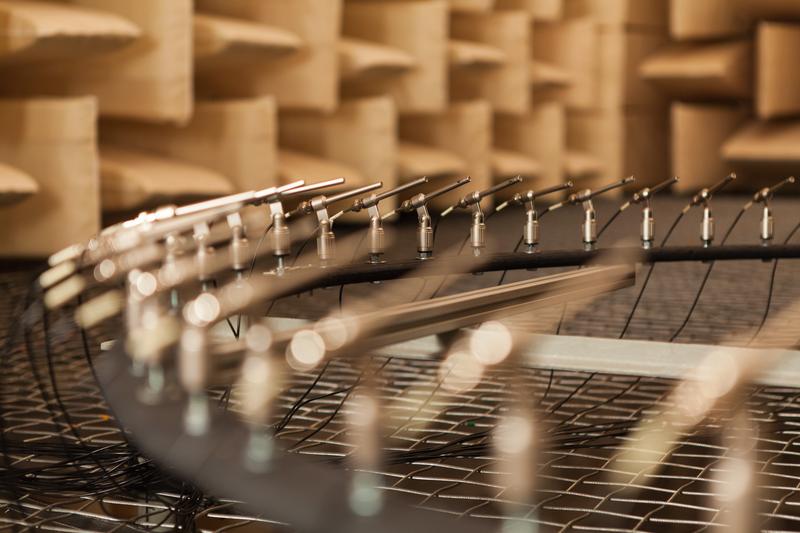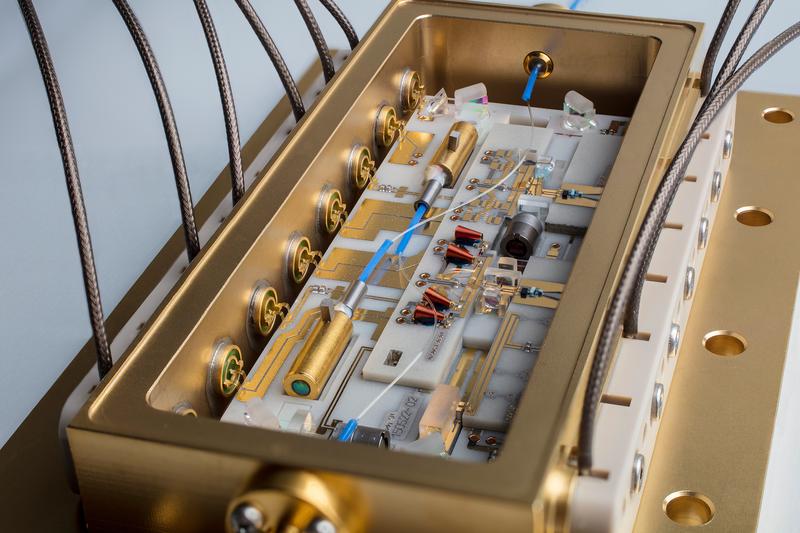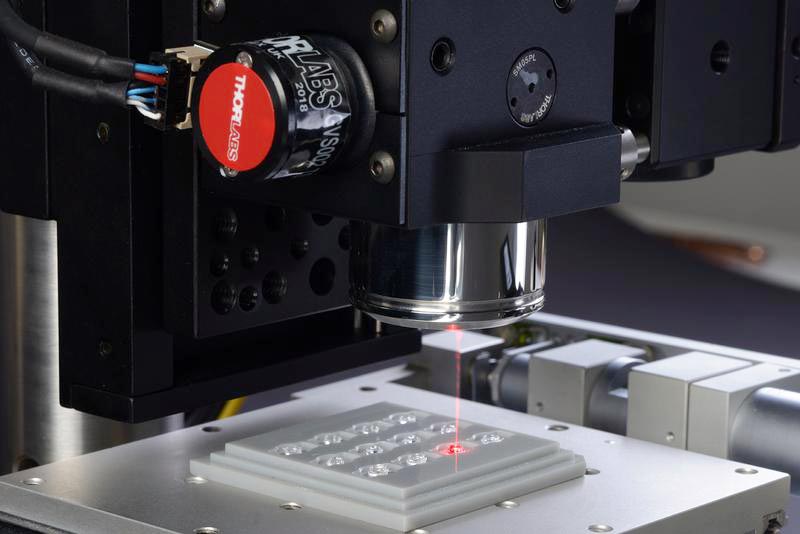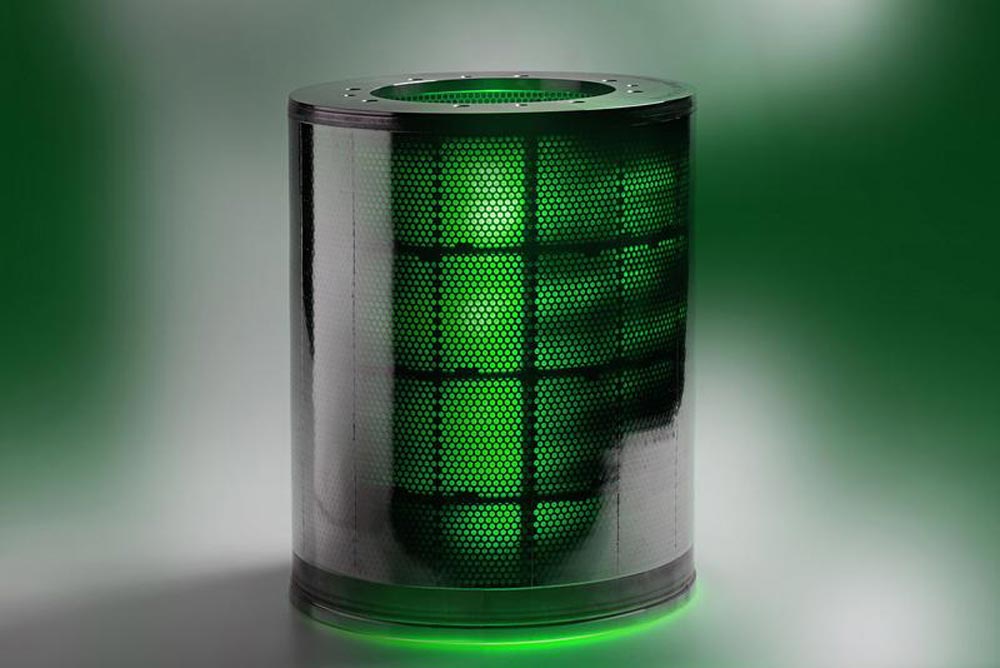

Microphone Ring Array - Thanks to intelligent acoustic measurement technology, focused sound recording is also possible in noisy environments.
Fraunhofer IDMT
The combination of intelligent acoustic sensor technology with secure and reliable data processing has the potential to revolutionize automated process control and quality assurance. For the development of the method, the researchers from Fraunhofer IDMT have leveraged their skills and expertise from three different areas: robust sound recording over microphones, automatic audio signal analysis, and machine learning.
+++ Retrofitting solution for contactless, non-destructive quality control +++
This integrated approach brings about three major benefits:
– defective parts or components can be detected simply by their sound; traditional quality assessment requiring the destruction of randomly selected parts and components (to check welding seams, for example) can thereby be replaced with non-destructive testing;
– processes and products can be inspected from a certain distance, as no direct contact with machines or parts/components is required;
– the method can easily be integrated in existing production facilities and testing procedures.
At Hannover Messe 2018, Fraunhofer IDMT will be showcasing a new, interactive demonstrator illustrating the high-performance method. To develop this demonstrator, the researchers from Ilmenau teamed up with their colleagues from Fraunhofer IWS (Institute for Materials and Beam Technology, Project group at the Dortmunder OberflächenCentrum DOC®).
+++ Interactive and entertaining demonstrator +++
The team of researchers used RAVENSBURGER’s GraviTrax®, an entertaining ball run (marble run) system, and coated one track segment and a number of metal balls with a diamond-like carbon coating, called Diamor®. This carbon film is typically used to coat ball bearings in industrial applications in order to extend their service life. At the booth, visitors may set in motion different balls – uncoated, with a polished and unpolished Diamor® film as well as defective ones. As soon as the coated balls roll down the coated track segment, the airborne-sound based analysis sets in to identify the material, the surface of the balls, and possible defects. The results of the analysis are displayed on a screen.
Judith Liebetrau, project manager at Fraunhofer IDMT, explains the idea behind the demonstrator: ”What we will be demonstrating at Hannover Messe is one possible application – acoustic monitoring for quality control in the process of refining metal parts. As our method works contact-free, it is perfectly suited for acoustic inspection of moving parts, such as ball bearings.”
Fraunhofer IDMT’s new business unit Industrial Media Applications (IMA) leverages the expertise from many years of applied research in four domains: intelligent acoustic measurement technology, audiovisual signal analysis, machine learning, and safety and security technologies. IMA thereby produces new solutions for being applied in industrial settings.
Visit us at the Fraunhofer Booth C22 in Hall 2 – and get to know our method for acoustic condition monitoring and quality assurance of processes and products.
http://s.fhg.de/Hannover-Messe-IMA-eng – Pictures and more information
https://www.idmt.fraunhofer.de/en/business_units/ima.html – Business Unit Industrial Media Applications












